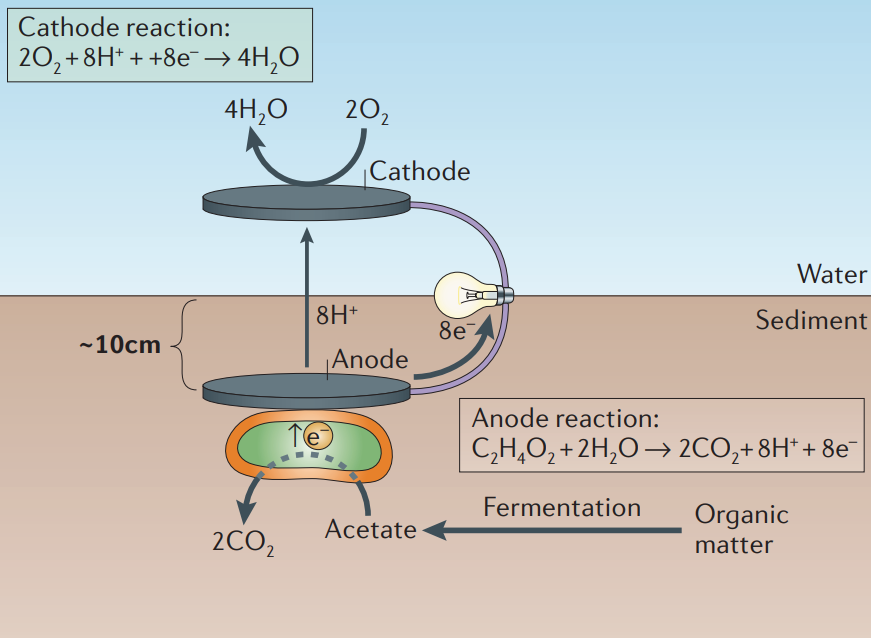“Microbial fuel cells” generating electricity from sludge
Every day we digest food to obtain “energy”. This energy can be converted into various forms such as heat and electricity. This electricity produced when living organisms break down food (organic matter) is called bioelectricity.
In the aquatic environments, polluted water and soil are rich in organic matter and are home to a variety of microorganisms. The technology to collect bioelectricity produced by microorganisms by installing electrodes in such places is called “microbial fuel cells”. Microbial fuel cells are a next-generation renewable energy technology that began to gain momentum in the 2000s. For example, the sewage discharged annually from South Korea contains a similar amount of energy to that produced by 6.5 nuclear reactors (6.5 GW). Converting this sewage to energy at 40% efficiency could replace 3.2 nuclear reactors (3.2 GW). We are researching the use of resources found in human society and nature, such as industrial by-products (e.g., steel slag) and algae, to increase the energy efficiency of microbial fuel cells. In addition to seeking high power production, we are working to universalize microbial fuel cells by proposing specialized applications in various fields such as natural sea, aquaculture farms, steel making industry, livestock industry, and agriculture.
Every day we digest food to obtain “energy”. This energy can be converted into various forms such as heat and electricity. This electricity produced when living organisms break down food (organic matter) is called bioelectricity.
In the aquatic environments, polluted water and soil are rich in organic matter and are home to a variety of microorganisms. The technology to collect bioelectricity produced by microorganisms by installing electrodes in such places is called “microbial fuel cells”. Microbial fuel cells are a next-generation renewable energy technology that began to gain momentum in the 2000s. For example, the sewage discharged annually from South Korea contains a similar amount of energy to that produced by 6.5 nuclear reactors (6.5 GW). Converting this sewage to energy at 40% efficiency could replace 3.2 nuclear reactors (3.2 GW). We are researching the use of resources found in human society and nature, such as industrial by-products (e.g., steel slag) and algae, to increase the energy efficiency of microbial fuel cells. In addition to seeking high power production, we are working to universalize microbial fuel cells by proposing specialized applications in various fields such as natural sea, aquaculture farms, steel making industry, livestock industry, and agriculture.


